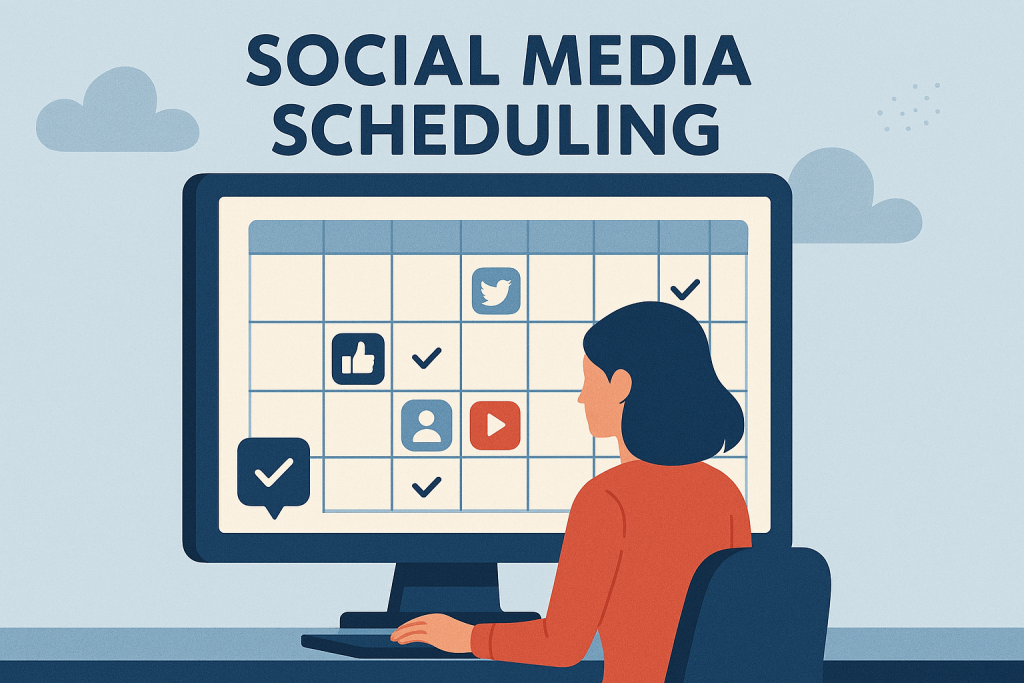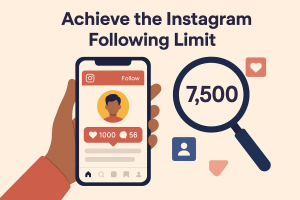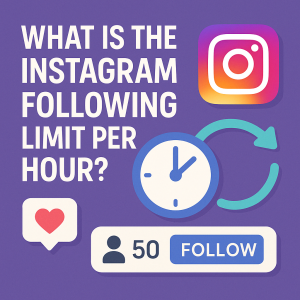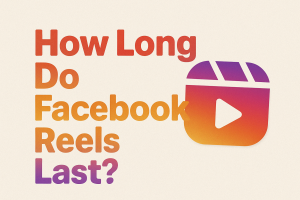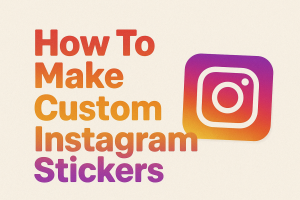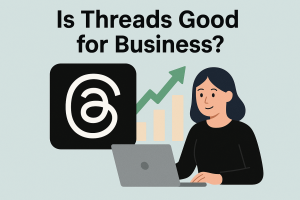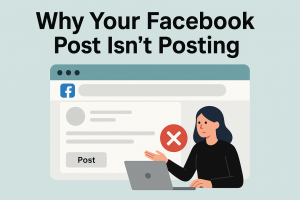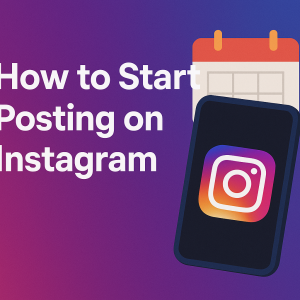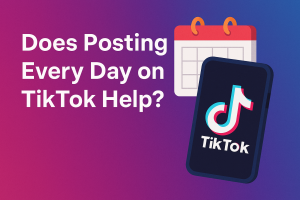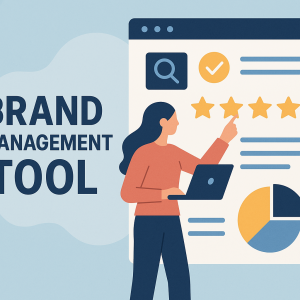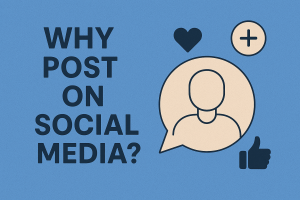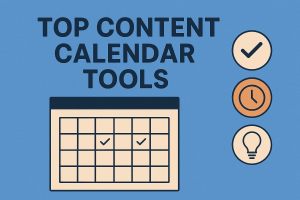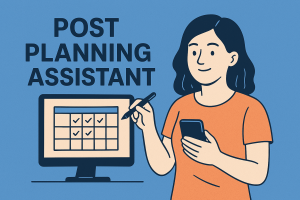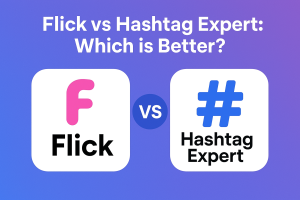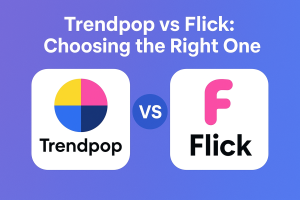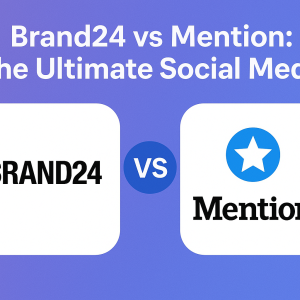The Strategic Power of Social Media Scheduling
Let’s face it: manually posting on multiple social media platforms is a huge challenge for businesses that want consistent engagement. Switching from sporadic posts to a planned social media scheduling strategy significantly impacts team operations and audience connection. This change allows businesses to move past reactive posting and gain a real advantage. We’ll see how businesses using scheduling systems often outperform those still using manual methods. We’ll specifically look at metrics related to better engagement, increased team productivity, and stronger audience growth.
Why Social Media Scheduling Matters
A key benefit of scheduling is consistency. Regular posting keeps your audience engaged and strengthens your brand presence. It’s similar to gardening; regular care leads to growth, while neglect leads to decline. Scheduling helps you maintain a consistent flow of content, even when you’re busy. This consistency builds your brand and cultivates a loyal audience.
Planning your posts for peak audience activity times significantly increases your reach. Understanding when your audience is most active on each platform lets you share content when they’re most likely to see it. For instance, a business targeting professionals might schedule LinkedIn posts for weekday mornings. A brand targeting a younger audience might schedule TikTok content for evenings and weekends. This strategic timing leads to higher visibility and better engagement.
One significant trend is the growing number of social media users. As of January 2025, over 5.24 billion people use social media globally, with the average user on 6.83 platforms monthly. This high engagement underscores the importance of scheduling to effectively reach diverse audiences. Using social media scheduling tools helps businesses manage their presence across various platforms, ensuring consistent interaction. This highlights not only social media’s growth but also the increasing complexity of managing multiple accounts. With such a vast audience, businesses need to plan their content strategically to maximize their online presence.
Efficiency and Productivity Gains
Beyond audience engagement, social media scheduling greatly improves team efficiency. By creating and scheduling content in advance, teams free up time for other essential tasks like strategy, community engagement, and performance analysis. Instead of constantly posting, teams can focus on proactive planning and building relationships with their audience. This proactive approach, powered by efficient scheduling, boosts productivity and reduces burnout by enabling teams to work smarter, not harder. This shift from reactive to proactive work allows teams to focus on high-value activities that truly benefit their business. Through strategic social media scheduling, businesses can effectively manage the complexities of the digital realm and create a more sustainable and impactful social media presence.
Scheduling Tools Face-Off: Finding Your Perfect Match

Effective social media scheduling requires choosing the right tools. With a plethora of options available, selecting the perfect fit for your needs can be challenging. Your choice impacts your results. For beginners, a comprehensive guide like the one on Social Media Management Tools can be invaluable. We’ve analyzed popular platforms such as Buffer, Hootsuite, Later, and Sprout Social, alongside newer tools, to help you find the perfect match for social media scheduling.
Key Features to Consider
Each tool offers distinct advantages. Some excel in analytics, others focus on content calendars or team-based approval processes. Here are some key features to evaluate:
- Analytics Integration: Select tools that integrate directly with your analytics platforms. This enables performance tracking and data-driven adjustments.
- Content Calendars: A visual calendar helps you plan content, identify gaps, maintain balance, and ensure posting consistency.
- Approval Workflows: For teams, a streamlined approval system is vital. It guarantees content adheres to brand guidelines and publishes on schedule.
- Multi-Platform Support: Choose a tool that supports all your social media platforms, including Instagram, Facebook, Twitter, and LinkedIn.
Comparing Popular Scheduling Tools
The following table, “Social Media Scheduling Tools Comparison,” offers a concise overview of prominent social media scheduling tools, comparing their key features, pricing, supported networks, and ideal use cases.
To help you navigate the world of social media management, we’ve compiled a detailed comparison of some leading platforms. This table breaks down the key differences, allowing you to quickly assess which tool best aligns with your needs.
| Tool Name | Pricing | Key Features | Supported Networks | Best For |
|---|---|---|---|---|
| Buffer | Free & Paid plans | Simple interface, analytics integration | Twitter, Facebook, etc. | Beginners, Small Businesses |
| Hootsuite | Free & Paid plans | Multi-column dashboard, team collaboration tools | Most major networks | Larger teams, Agencies |
| Later | Free & Paid plans | Visual content calendar, Instagram focus | Instagram, Pinterest, etc. | Visual brands |
| Sprout Social | Paid plans | Robust analytics, advanced reporting features | Most major networks | Enterprise, Large Businesses |
| Galaxyz | Visit Galaxyz for details | Streamlined posting and comprehensive analytics | Most major networks | All business sizes |
This comparison highlights the varied strengths of each platform. Buffer, with its simple interface, is great for beginners. Hootsuite, offering a multi-column dashboard and team tools, suits larger organizations. Later excels for visual brands due to its Instagram focus. Sprout Social provides robust analytics for enterprise-level businesses. Finally, Galaxyz caters to all business sizes with streamlined posting and comprehensive analytics.
Choosing the Right Tool for Your Needs
The ideal social media scheduling tool depends on your specific needs and budget. Consider your team size, preferred platforms, and essential features. Do you prioritize user-friendliness or powerful analytics? Are you a solopreneur or part of a large team? Answering these questions helps you determine the best fit. A small business might prefer Buffer’s simplicity, whereas a large agency might benefit from Hootsuite’s collaborative tools.
Crafting Your Winning Scheduling Strategy
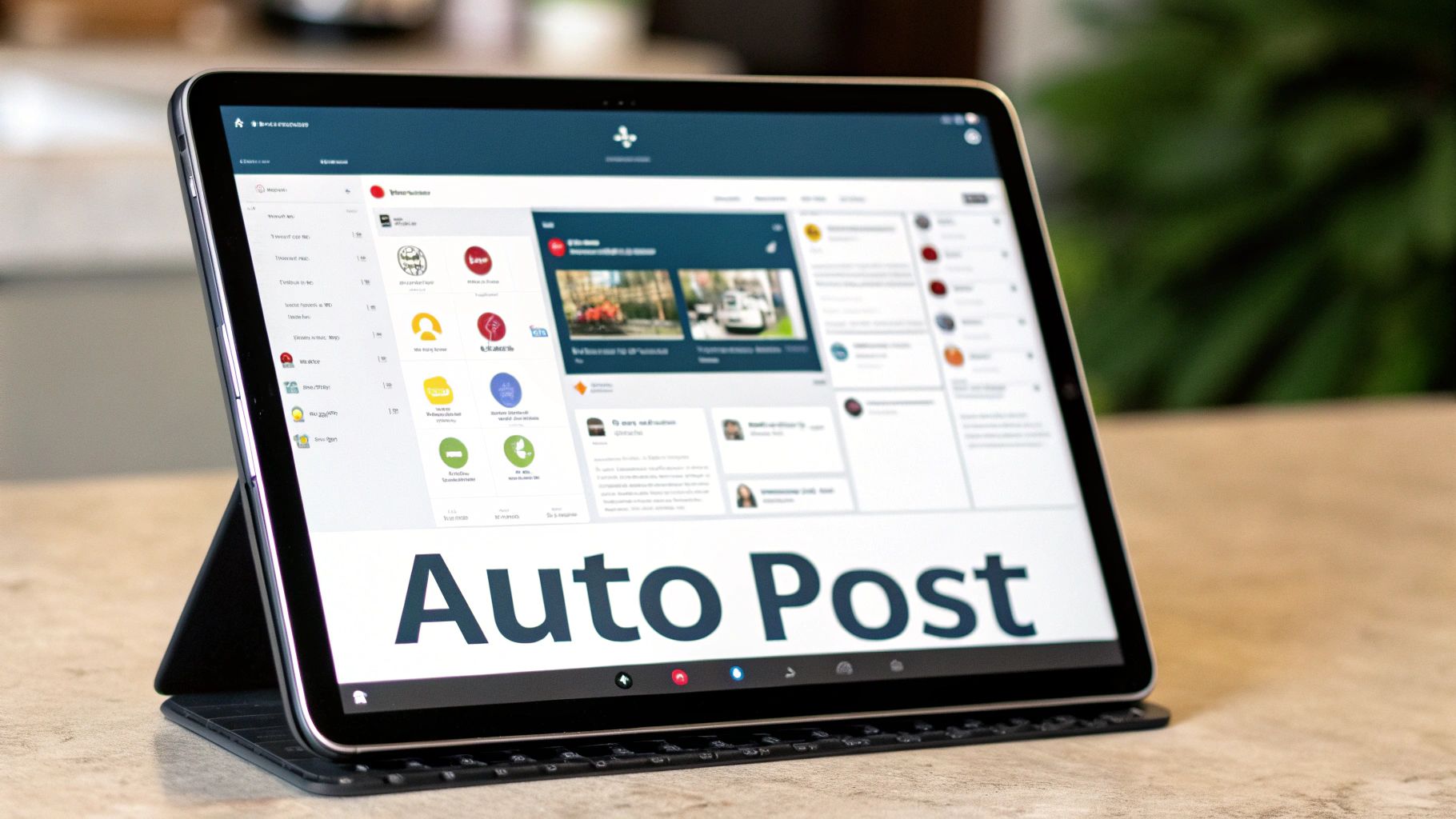
Effective social media scheduling is more than just setting it and forgetting it. It’s a strategic process that requires analyzing your current performance, understanding your audience, and creating a content calendar that truly resonates. Just as you wouldn’t embark on a road trip without a map, a successful social media strategy needs a well-defined roadmap. This section helps you build yours.
Auditing Your Social Media Presence
Begin by examining your current social media activity. What’s working? What’s falling flat? Which platforms are driving the most engagement? This audit sets the foundation for your scheduling strategy. It’s like taking stock of your pantry before heading to the grocery store. You need to know what you have to avoid duplicates and ensure you grab the essentials. Focus on identifying your top-performing content and deciphering the elements that contribute to its success.
Identifying Key Engagement Patterns
Understanding your audience is paramount. When are they most active online? What type of content do they gravitate towards? The answers to these questions will significantly influence your scheduling decisions. For example, if your audience is primarily active during the week, scheduling posts for the weekend might not yield the best results. Analytic tools like Galaxyz can provide detailed insights into these engagement patterns. This data allows for a more targeted approach, delivering the right content at the right time. This personalized strategy strengthens connections and boosts engagement.
Building a Content Calendar
A well-structured content calendar is the backbone of consistent posting. This calendar should outline the type of content, posting frequency, and intended platform for each post. Think of it as your social media playbook, ensuring a balanced content mix and a regular posting schedule. This organized approach eliminates last-minute scrambling and maintains a consistent flow of engaging material. A content calendar also ensures that your social media efforts align with your overarching marketing goals.
The impact of social media scheduling on business is substantial, particularly when it comes to improving marketing ROI. Approximately 90% of social media marketers believe social media provides a positive return on investment. Strategic scheduling helps businesses target specific demographics, enhance brand visibility, and ultimately drive sales. For example, IOI Ventures increased a school’s website conversions from social media by over 500%. This demonstrates the power of a well-planned social media strategy. Effective scheduling optimizes content delivery, ensuring messages reach the right audience at the optimal time, maximizing ROI. Find more detailed statistics here.
Balancing Content and Platform Optimization
Your scheduling strategy should encompass a variety of content formats, including text, images, videos, and stories. Each platform has its own best practices and ideal posting times. Tailoring your content and schedule to each platform is essential. Posting the same content across all platforms with the same schedule is ineffective. Just as you wouldn’t wear a swimsuit to a board meeting, you need to adapt your content and scheduling approach to each platform’s distinct environment. For instance, Instagram is visually driven, so high-quality images and videos are key. Twitter, however, is more text-based, emphasizing concise and engaging copy.
Avoiding Over-Automation
While automation is a cornerstone of social media scheduling, maintaining a human touch is crucial. Avoid excessive automation that can make your brand appear impersonal. Interact with your audience, respond to comments, and participate in relevant conversations. This personal connection builds trust and fosters a sense of community. Social media is all about connection, and authentic interaction is vital for building strong relationships. Galaxyz allows you to schedule content strategically while still allowing room for spontaneous engagement, creating a balance between automation and authenticity. This flexible approach ensures your social media scheduling remains effective and engaging.
Timing Is Everything: Finding Your Engagement Sweet Spots
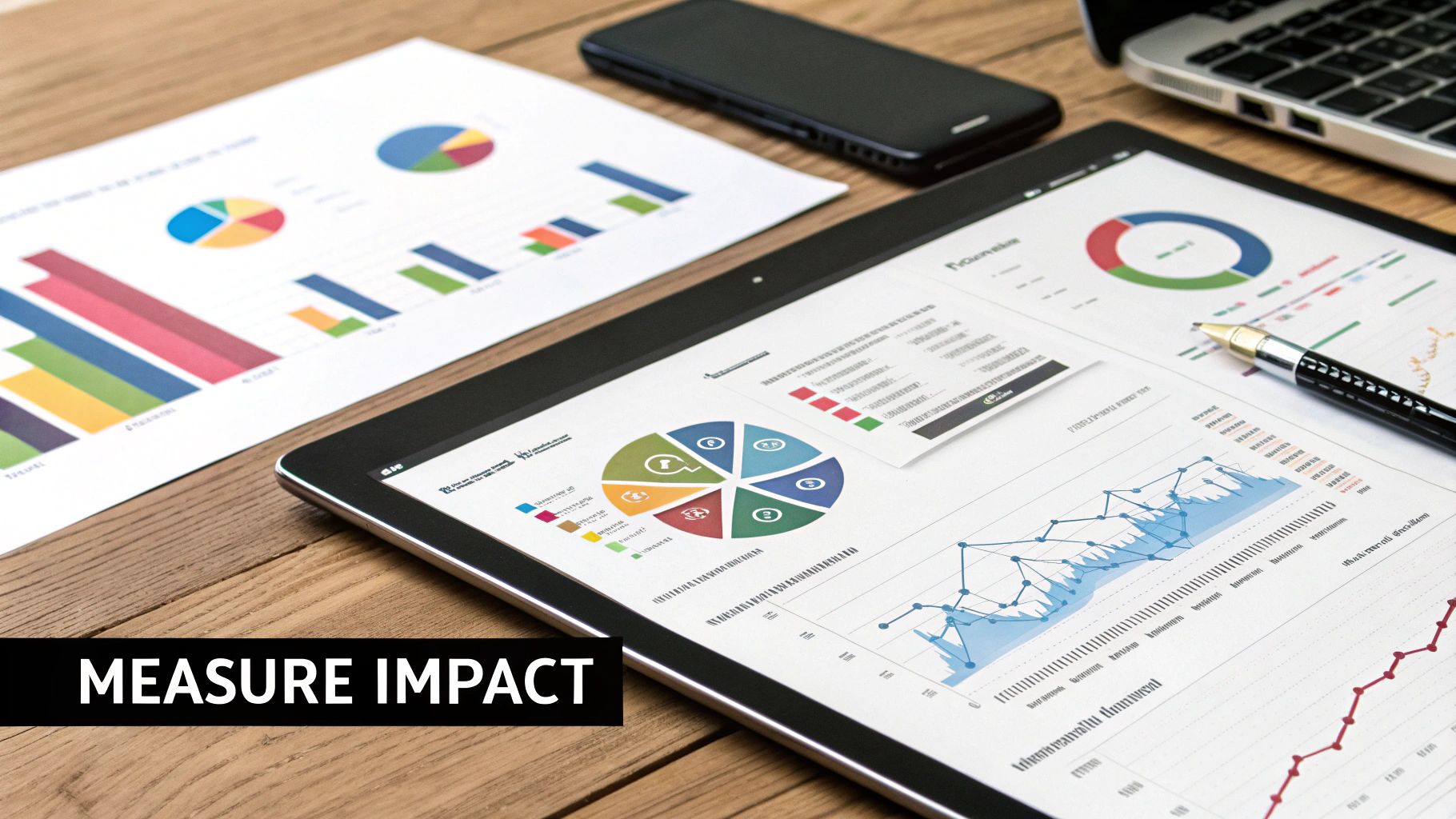
Generic advice on posting times simply isn’t enough. Your audience is unique, and understanding their behavior is the key to effective social media scheduling. We’ll explore how audience activity varies across platforms and industries, and how you can use these insights to schedule your posts for maximum impact. This includes A/B testing, analyzing engagement patterns, and adapting your schedule as needed. We’ll also discuss adjusting your timing strategy based on campaign type, seasonality, and platform algorithms.
Understanding Audience Behavior
Think of your audience as individuals. Understanding their online habits helps you connect with them more effectively. Consider their time zones. When are they most active online? What devices are they using? These factors significantly impact when they see and interact with your content.
For example, if you’re targeting working professionals, posting on LinkedIn during weekday lunch breaks might yield better results than late-night posts. Conversely, a business targeting teenagers might find better engagement on TikTok in the evenings or on weekends.
A/B Testing and Analytics
A/B testing different posting times is crucial. Try posting similar content at various times and days to identify what resonates best. Tools like Galaxyz can help manage these tests and track results. This experimental approach offers valuable data, allowing you to refine your posting schedule based on real audience behavior.
Analytics are essential for understanding engagement patterns. They provide the insights you need to further optimize your social media scheduling. Look for trends. Are certain types of posts performing better at specific times? Is there a spike in engagement on particular days? Use these clues to inform your strategy.
Adapting to Change
Social media is constantly changing. Platform algorithms, audience behaviors, and even seasons all impact engagement. This means your social media scheduling must be flexible. A successful strategy adapts to these shifts.
For example, during holidays or special events, you might need to adjust your schedule. Similarly, algorithm changes on a platform may require you to experiment with different posting frequencies.
Case Studies and Examples
Real-world examples demonstrate the importance of strategic scheduling. One B2C company saw a significant increase in engagement by moving their Instagram posts from midday to early evening, aligning with their target audience’s activity after work and school. A B2B company found that scheduling LinkedIn posts during morning commute hours resulted in higher click-through rates on their articles. These cases illustrate how tailoring your schedule to specific audience behaviors can make a real difference.
Platform-Specific Considerations
Every platform is unique. Instagram may favor visual content during peak usage times, while Twitter might be better for quick updates throughout the day. Consider the nature of each platform when developing your social media scheduling strategy. The table below provides a general overview, but remember, your specific audience data should always guide your decisions.
To help illustrate optimal posting times across various platforms, let’s look at some industry benchmarks. The following table provides a general overview of platform-specific best practices.
Platform-Specific Optimal Posting Times
| Platform | B2B Best Times | B2C Best Times | Day of Week Performance | Engagement Factors |
|---|---|---|---|---|
| Mid-week, daytime | Evenings, weekends | Weekends generally higher | Visual content, interactive posts | |
| Varies widely | Evenings, weekends | Consistent across days | High-quality visuals, stories | |
| Weekdays, daytime | Varies widely | Weekdays generally higher | Real-time updates, engaging copy | |
| Weekdays, work hours | Less relevant | Weekdays significantly higher | Professional content, articles |
This table offers a starting point. However, remember that your own audience data is the ultimate guide. Analyze your data, adapt to changes, and leverage tools like Galaxyz to create a social media schedule that effectively connects with your audience and achieves your marketing objectives.
Measuring What Matters in Scheduling Performance
Stop chasing superficial metrics like likes and follows. Instead, concentrate on the metrics that genuinely demonstrate the effect your social media scheduling has on your business. This means looking past basic engagement and understanding the true ROI of your strategy. We’ll explore setting key performance indicators (KPIs) that align with your business goals, tracking both immediate and long-term effects, and generating reports that clearly showcase the value of your work. This also includes learning how to utilize analytics to identify your most effective content, determine optimal posting times, and recognize trends in audience behavior to guide future planning.
Defining Meaningful KPIs
Your KPIs should directly correlate to your business objectives. If your goal is boosting brand awareness, track reach and impressions. If you’re aiming to drive sales, concentrate on website clicks and conversions. For lead generation, track lead magnet downloads or form submissions. Connecting your KPIs with your broader goals ensures you’re analyzing the data that truly impacts your bottom line.
For example, a restaurant might monitor reservations or online orders originating from social media, while a software company might focus on demo requests or free trial sign-ups. Using Galaxyz, you can easily track link clicks from social media campaigns using platform-specific link shorteners.
Tracking Immediate and Downstream Impact
Effective measurement involves considering both the immediate and long-term consequences of your scheduling. Immediate impact includes metrics like likes, comments, and shares, offering a quick view of audience engagement. Downstream impact, on the other hand, centers on the actions taken after the initial engagement, such as website visits, product purchases, or email sign-ups.
This more comprehensive perspective provides a more complete understanding of your social media ROI. A high click-through rate on a product promotion post is a positive immediate result. However, the true measure of success lies in the number of resulting sales.
Building Effective Reporting Frameworks
Your reports should effectively communicate the value of your social media scheduling activities. Use visuals like charts and graphs to present information clearly. Highlight key accomplishments and connect them directly to business goals. This might involve illustrating how increased engagement has translated into higher website traffic or how a focused campaign resulted in a significant number of leads.
Galaxyz, for example, provides automated reports, allowing you to visualize the effect of your social media posting on your overall business results. Clear communication is essential for demonstrating the effectiveness of your strategy and obtaining support from stakeholders.
Analyzing Content Performance and Audience Response
Use analytics to determine your most successful content types. What resonates best with your audience? Are videos outperforming images, or are text-based posts sparking more conversation? These insights can refine your content strategy, helping you create more of what works.
Also, analyze audience engagement patterns. Are there particular times or days when engagement is higher? Do specific hashtags or topics generate increased interest? This data can inform your future scheduling decisions. You can track these trends over time using Galaxyz‘s reporting features.
Calculating the ROI of Your Scheduling Investment
Measuring ROI validates the resources allocated to your scheduling system. Compare the cost of your social media scheduling tool to the value created through increased leads, sales, or brand awareness. This calculation can be intricate but provides invaluable data.
One approach is to track conversions specifically attributed to social media campaigns. Another is to calculate the time saved by automating scheduling, freeing up your team for other important tasks. For instance, if scheduling saves your team 10 hours weekly, calculate the monetary value of that time based on team members’ hourly rates. Compare this value to the cost of your scheduling software.
Success Stories: Scheduling That Transformed Results
What does effective social media scheduling look like in action? Real-world examples demonstrate how businesses have leveraged optimized scheduling to conquer challenges and achieve impressive results. We’ll explore case studies across various industries, detailing the initial hurdles, the implemented scheduling strategies, the tools employed, and the quantifiable outcomes. This analysis provides practical insights you can apply to your own social media strategy.
E-Commerce Brand Doubles Engagement
One e-commerce brand struggled to maintain a consistent posting schedule across various platforms. This inconsistency resulted in erratic engagement and restricted reach. To address this, they implemented a cross-platform social media scheduling strategy using a tool like Galaxyz. This allowed them to plan and schedule content across all their channels in advance.
This streamlined approach not only doubled their engagement but also decreased posting time by 70%. The time saved allowed the team to focus on crafting higher-quality content and interacting with their audience. This, in turn, led to a significant boost in brand visibility and a noticeable uptick in sales.
B2B Company Generates Qualified Leads
A B2B company aimed to position itself as a thought leader in its industry but lacked a consistent content strategy. They adopted social media scheduling to distribute their thought leadership articles and other valuable content strategically. By concentrating on platforms like LinkedIn and scheduling posts during peak business hours, they saw a substantial rise in qualified leads.
The consistent delivery of valuable content fostered trust and solidified their status as experts, directly contributing to business expansion.
Nonprofit Maximizes Impact with Limited Resources
A nonprofit organization with limited resources faced the challenge of maintaining a robust social media presence with a small team. They implemented a strategy centered on content repurposing and scheduling. By reusing existing content and scheduling it across different platforms, they maximized their reach and impact without increasing their workload.
This efficient method enabled them to connect with a broader audience and advance their mission with minimal resources. This strategy also helped maintain consistent messaging across platforms, strengthening their brand identity and amplifying their core message.
Targeted Scheduling and Strategic Advertising Drives Growth
The effectiveness of social media scheduling is evident in the success stories of businesses using these platforms strategically. One entrepreneur utilized social media scheduling and Facebook ads to significantly expand her email list. By targeting specific demographics and interests, she gained 788 new subscribers at a cost of only 7 cents per lead, significantly lower than the industry average of $1-$2 per lead.
This example demonstrates how targeted scheduling, coupled with strategic advertising, can produce remarkable growth. Learn more about targeted advertising and list building here. By automating and optimizing social media posts, businesses can concentrate on engaging with their audience, nurturing relationships, and ultimately driving long-term sales.
Key Takeaways from Success Stories
These success stories underscore several key advantages of strategic social media scheduling:
- Increased Efficiency: Scheduling frees up time for other essential tasks.
- Improved Consistency: Consistent posting maintains audience engagement and reinforces brand identity.
- Better Reach and Engagement: Strategic timing optimizes content visibility and impact.
- Measurable Results: Scheduling facilitates progress tracking and demonstrates return on investment.
By drawing insights from these real-world examples and integrating best practices into your own strategy, you can unlock the full potential of social media scheduling and transform your results. Tools like Galaxyz can empower you to implement these strategies effectively, helping you achieve your social media objectives and propel business growth.
Advanced Scheduling Tactics for Maximum Impact
Building upon a basic social media scheduling foundation, we’ll explore advanced techniques used by seasoned social media managers to amplify engagement and achieve significant results. These strategies go beyond simply filling a content calendar. They focus on optimizing content delivery, adapting to different platforms, and responding to real-time data. This is where social media scheduling becomes a powerful strategy for growth.
Content Batching and Cross-Platform Adaptation
Content batching, creating multiple pieces of content at once, improves efficiency while preserving creative quality. It’s like meal prepping for the week – far more efficient than cooking individual meals daily. This allows dedicated focus on content creation, leading to more polished and cohesive posts.
However, simply duplicating content across platforms is ineffective. Each platform has unique characteristics and audience expectations. Cross-platform adaptation tailors content to each platform’s nuances. A long-form article might be perfect for LinkedIn, while a shorter version with a visual works better on Instagram. This ensures your message resonates with each audience.
Dynamic Scheduling and Trending Topics
Dynamic scheduling goes beyond pre-set schedules. It involves adjusting posting times based on real-time data and trending topics. Think of news outlets – they publish breaking news immediately, not on a rigid schedule. Dynamic scheduling lets you capitalize on current events, inserting relevant content into ongoing discussions.
Integrating trending topics requires vigilance and audience understanding. Tools like Galaxyz help monitor trending hashtags and adjust your schedule for timely posts, maximizing visibility and relevance. This keeps your content fresh and engages your audience.
Balancing Automation and Authenticity
Automation is vital for social media scheduling, but authenticity matters. It’s like using a bread maker – it simplifies the process, but you still add your personal touch. Automation streamlines scheduling, but genuine audience interaction is essential.
Balancing scheduled posts with real-time engagement is key. Respond to comments, participate in discussions, and foster community. This personal touch builds trust. Galaxyz lets you schedule content while leaving room for spontaneous interactions, achieving the right balance.
Advanced Techniques for Personalized Experiences
Leading brands utilize advanced tactics for personalized content. Theme-based content blocks group related content, providing a cohesive audience experience. Like a playlist – grouping songs with similar vibes. This allows for a structured and engaging content strategy.
Strategic content recycling repurposes existing content, breathing fresh life into older posts. It’s like using leftover ingredients for a new dish – minimizing waste and maximizing value. This requires creativity and adding new perspectives.
Audience segmentation through platform-specific scheduling ensures tailored content reaches the right audience segment on the appropriate platform. A fashion brand might target younger audiences with visuals on Instagram while sharing professional updates on LinkedIn. This optimizes engagement.
Ready to elevate your social media presence? Schedule and post content across multiple social media platforms using Galaxyz. Boost your social reach instantly.

